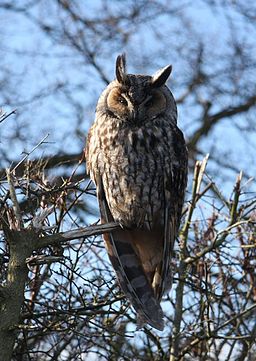Offer
Provide additional details about the offer you're running.
Provide additional details about the offer you're running.
Provide additional details about the offer you're running.

Feature Image By U.S. Fish and Wildlife Service Headquarters (Long-eared owl Uploaded by Dolovis) [CC BY 2.0 (http://creativecommons.org/licenses/by/2.0)], via Wikimedia Commons
A long, slender raptor, the Long-eared Owl is a unique sight to behold given the sometimes surprised looking expressions their long, pointed ears can sometimes display. These owls play it close-to-the-chest as well, restricting the bulk of their movements under the cover of darkness and often seamlessly camouflaging with the trunk of a tree.
From a roosting perspective, these owls can be downright elusive. Often found in the densest of vegetation, nesting in willows, cottonwoods and junipers. These owls can be found year-round in most of Canada and the western United States. Their Canadian range varies across most of British Columbia and the Prairies and consistently moves east into the Canadian Maritime Provinces. In the United States, these birds can be found year-round throughout the Western States and most other areas of the country during the winter months.
A medium sized owl, the Long-eared Owl measures between 35-40cm (13.8-15.7 inches), and falls between the Great Horned Owl and the Western Screech Owl in terms of overall size. The Long-eared Owl sports a fairly dark plumage featuring orange colouring on their faces and ear tufts.
Outside of the breeding season, the Long-eared Owl is usually a pretty quite owl, which can provide enthusiasts with a great deal of difficulty when trying to locate them. During the breeding season, however, these owls can rival even the most vocal songbirds. The males will deliver up to 200 “whoo” notes every 2-4 seconds and can be heard from up to half of a mile away. The return call given by the female of the species is slightly higher pitched, sounding more like a bleating lamb.
High Quality Blend